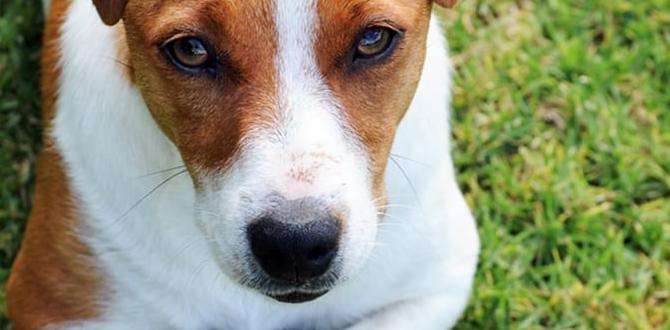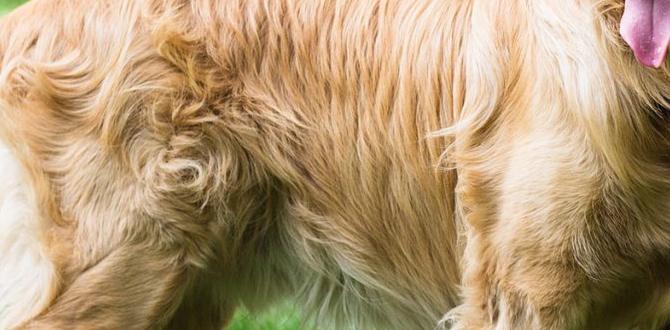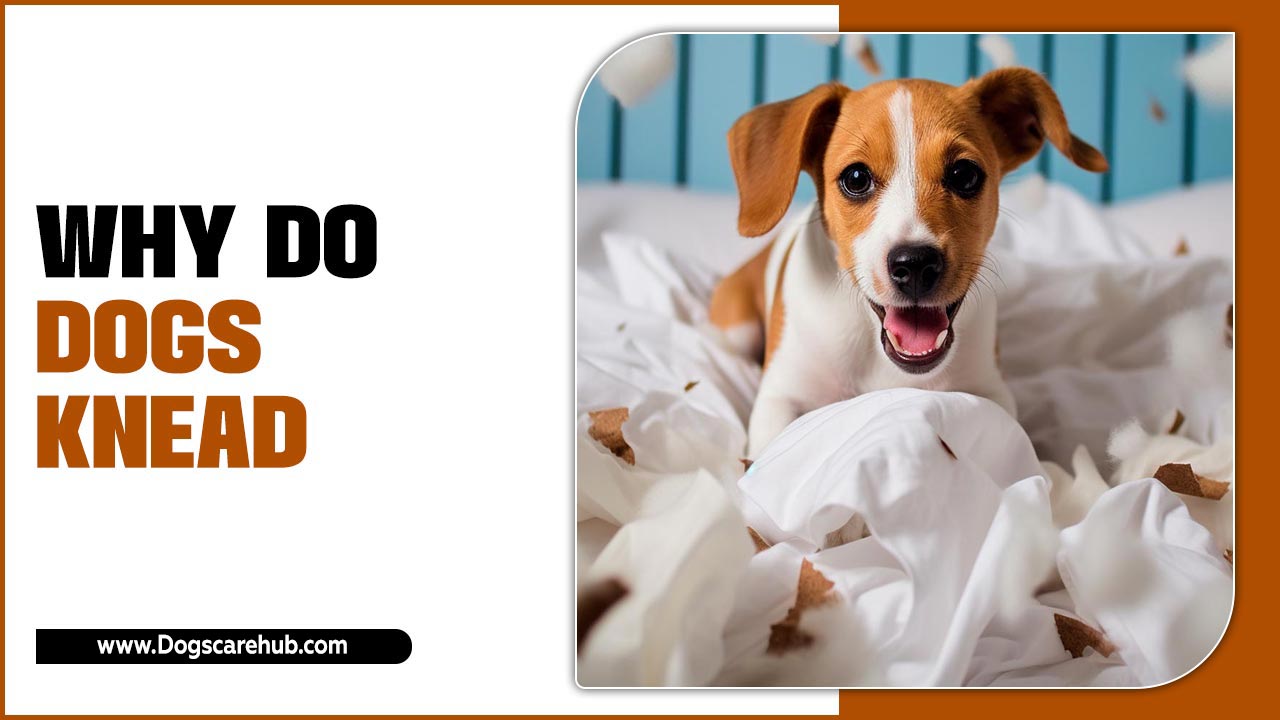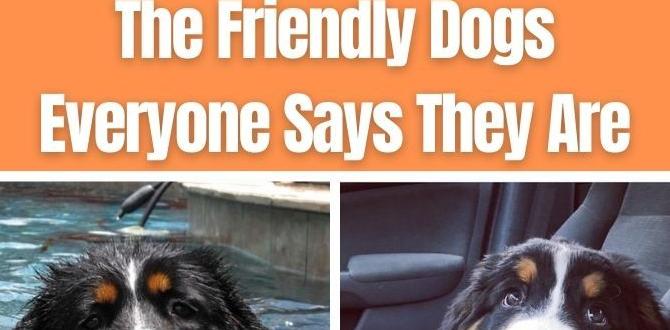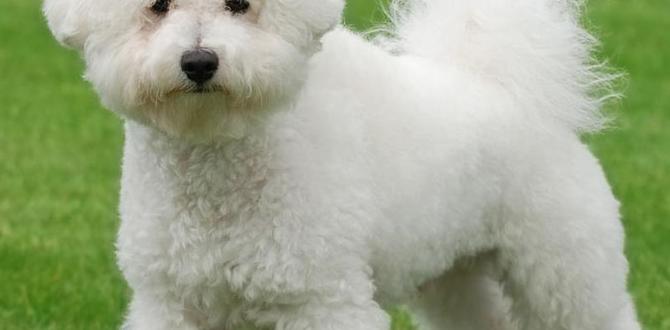Dogs are known as man’s best friend, but what happens when they growl at children? Imagine a sunny day. Kids are playing in the yard, and suddenly, a dog begins to growl. What does it mean?
Growling can sound scary to some. It might make you wonder if the dog is angry or afraid. Did you know that a dog’s growl is its way of talking? Some dogs growl to warn others to stay away.
So, is it normal for dogs to growl at children? The answer isn’t always clear. It depends on the dog and the situation. Understanding this behavior is important.
Let’s explore why a dog might growl at kids. We’ll find out how to keep everyone safe and happy. With the right knowledge, you can help kids and dogs get along better.
Dog Growling At Children: Understanding The Behaviors

Understanding a Dog Growling at Children
Many parents worry when their dog growls at children. This behavior can mean various things. Sometimes, dogs growl because they feel scared or threatened. They may want to protect their space. Did you know that a growl can also be a dog’s way of communicating? It’s important to pay attention to the context. Keeping kids safe around dogs involves teaching them how to act. Learning about dog body language can help everyone get along better.Common Reasons for Dog Growling at Children
Fear and anxiety in dogs around children. Territorial behavior and protecting their space.Dogs might growl at children for a few reasons. They can feel scared or anxious when kids come too close. Sometimes, dogs need their own space. When a child invades that space, the dog may growl to say, “Hey! Back off!” It’s like when we’re trying to do homework, and someone keeps poking us. It’s annoying! Also, some dogs are very protective of their stuff, like toys or food. They just want to keep their treasures safe.
| Reason | Explanation |
|---|---|
| Fear and Anxiety | Dogs growl to warn when scared. Kids can be loud and unpredictable! |
| Territorial Behavior | Dogs want to protect their space and belongings from little intruders. |
Identifying Body Language and Context
Understanding canine body language signs. Contextual factors influencing growling behavior.Dogs have their own special ways of communicating. When a dog growls, it’s often trying to tell us something important. Look for their body language. Are their ears back? Is their tail stiff? These signs can mean they feel scared or threatened. The situation matters, too! If a child runs at them unexpectedly, they might growl out of surprise. Remember, dogs can’t speak human, so we must learn their signal system. It’s like trying to understand a furry little comedian who’s just trying to say, “Hey, back off!”
| Body Language Sign | Meaning |
|---|---|
| Ears Back | Feeling scared or defensive |
| Stiff Tail | Alert or nervous |
| Showing Teeth | Warning to stay away |
Understanding these signs helps keep everyone safe! Keep an eye on your dog and the playtime environment to help them feel relaxed.
Age and Breed Factors in Growling Behavior
Influence of a dog’s age on behavior toward children. Specific breeds known for growling tendencies.Age and breed can really change how dogs act around kids. Puppies might be playful and curious, while older dogs might be more protective. Some dogs, like Chihuahuas or Terriers, can be known for their growling. They might see children as playmates or little troublemakers. Being aware of these facts helps keep everyone safe and happy!
| Age | Behavior |
|---|---|
| Puppies | Playful and curious |
| Adult Dogs | More protective |
| Senior Dogs | Calm but wary |
Remember, knowing your dog’s breed can help you spot behaviors early. It’s all about keeping the fun and avoiding any growls that sound like they come from a monster!
Addressing Growling: Behavioral Training Techniques
Positive reinforcement strategies to modify behavior. Professional training interventions for serious cases.Training your dog can help reduce growling at children. Focus on positive reinforcement techniques. Reward your dog with treats or praise when they are calm around kids. Gradually expose them to children in a safe way. This builds trust and understanding.
If growling continues, consider professional help. A trainer can offer serious intervention. They will assess your dog and teach you proper strategies. It’s important to act quickly to ensure everyone’s safety.
How can I stop my dog from growling?
You can stop your dog from growling by using positive reinforcement and professional training if needed.Strategies:
- Use treats for good behavior.
- Teach commands like “sit” or “stay.”
- Seek a trainer for serious issues.
Creating a Safe Environment for Dogs and Children
Establishing boundaries and safe spaces for both. Educating children on how to approach dogs.To keep both dogs and children safe, it’s great to set clear boundaries. Dogs need their own space, like a cozy corner or a special bed. Kids should learn how to approach dogs too. Always ask the dog’s owner first. Remember, it’s like asking for permission before borrowing a toy!
| Do’s | Don’ts |
|---|---|
| Approach slowly and calmly. | Yell or run towards the dog. |
| Let the dog sniff your hand first. | Pat the dog’s head without asking. |
| Respect the dog’s space. | Push them into uncomfortable situations. |
Teaching kids these simple rules can help prevent misunderstandings. After all, dogs don’t speak our language. They might growl if they feel scared. Let’s make sure everyone is happy and safe!
When to Seek Professional Help
Signs that growling is a serious behavioral issue. Benefits of consulting a veterinarian or dog behaviorist.Dog growling can sometimes mean serious trouble. If your furry friend growls at kids more than he wags his tail, it’s time to pay attention. Look for signs like tense body language or showing teeth. These signs hint he might be more than just grumpy. Consulting a veterinarian or dog behaviorist is like calling in the pros. They can help figure out why your dog’s a bit on edge and offer solutions. Remember, prevention is better than a “ruff” surprise!
| Signs to Watch For | Why Consult a Pro? |
|---|---|
| Tense posture | To understand the root cause |
| Showing teeth | To learn proper training methods |
| Barking excessively | To ensure safety for everyone |
Conclusion
In summary, a dog growling at children can mean it’s scared or uncomfortable. Always watch for warning signs and teach kids how to approach pets safely. If a dog growls, it’s best to give it space. You can learn more about dog behavior to help keep both kids and pets happy. Remember, safety is important for everyone!FAQs
What Are The Common Reasons Why A Dog Might Growl At Children?Dogs might growl at children for a few reasons. Sometimes, they feel scared or threatened by sudden movements. They may not want to be touched, especially if they’re resting. Other times, they don’t like loud noises or fast actions. It’s important to teach kids to be gentle and calm around dogs to keep everyone happy.
How Can Parents Teach Children To Interact Safely With Dogs To Prevent Growling?To keep safe around dogs, we should always ask the owner if it’s okay to pet them. When we approach, we can move slowly and calmly. It’s important to let the dog sniff our hand first. We should never pull on their ears or tail. If a dog growls, that means it feels scared or mad, so we should back away quietly.
What Steps Should Be Taken If A Dog Growls At A Child During Playtime?If a dog growls at a child, we should stop playing immediately. You should calmly take the child away from the dog. Make sure everyone is safe. Give the dog some space to relax. After that, talk to an adult about what happened.
Are Certain Dog Breeds More Prone To Growling At Kids, And If So, Which Ones?Yes, some dog breeds might growl at kids more than others. For example, breeds like Dachshunds and Chihuahuas can sometimes be more protective. Larger breeds like Rottweilers and German Shepherds may also growl if they feel scared. It’s important to teach any dog to be friendly and safe around children. Always supervise kids and dogs when they’re together.
How Can Dog Owners Modify Their Pet’S Behavior To Reduce Instances Of Growling At Children?You can help your dog stop growling at kids by teaching it good behavior. First, reward your dog with treats when it stays calm around children. You can also supervise their time together to keep things safe. If your dog growls, calmly remove it from the situation without yelling. With patience and practice, your dog can learn to be nice around kids.
Meet Elyse Colburn, the devoted canine companion and storyteller behind the enchanting world of “Tales, Tails, and Adventures Unleashed.” A passionate dog enthusiast with a heart full of paw prints, Elyse Colburn shares heartwarming tales and insightful adventures, celebrating the joy, loyalty, and endless antics that make every dog a true hero. Join Elyse Colburn on this tail-wagging journey, where every post is a love letter to our four-legged friends.

